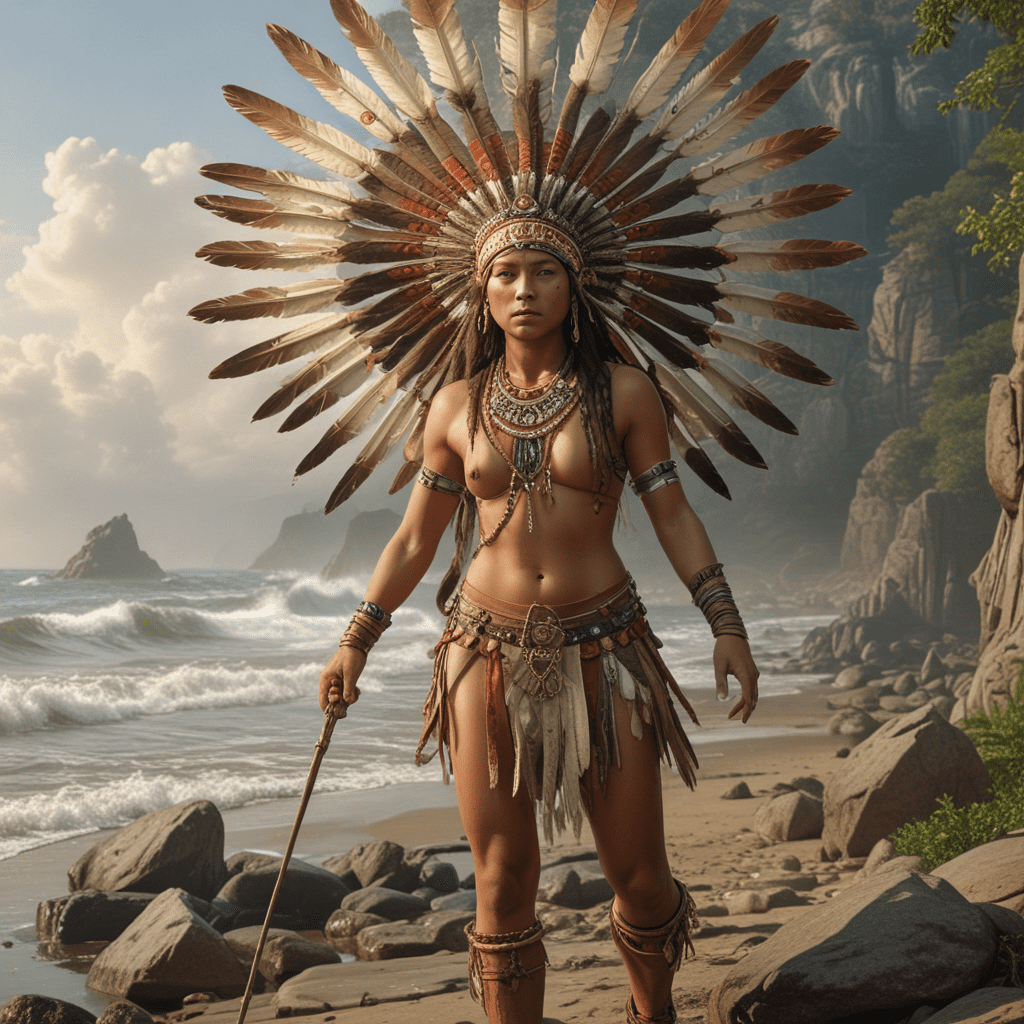The Mythology of the Narragansett Tribe
1. Introduction: The Significance of Narragansett Mythology
The Narragansett tribe, indigenous to the present-day state of Rhode Island, holds a rich and complex mythology deeply entwined with their cultural identity. These stories provide a lens into their beliefs, values, and relationship with the natural world. Through these myths, the Narragansett people have passed down their spiritual teachings, ecological knowledge, and historical experiences for generations.
2. The Creation Story: Moshup and Squanto
At the heart of Narragansett mythology lies the creation story of Moshup, the Creator, and Squanto, the Earth Mother. According to legend, Moshup created the land, sea, and sky from a vast emptiness. He then molded Squanto from the Earth and breathed life into her, giving birth to all living creatures. This myth encapsulates the sacred connection between the Narragansett people and their environment.
3. The Great Spirit: Manitou and Quonont
The Narragansett believe in a supreme being known as Manitou, an all-powerful and benevolent spirit. Manitou is often associated with the forces of nature, such as the sun, wind, and thunder. They also recognize Quonont, the Evil Spirit, who brings darkness, chaos, and misfortune. The balance between Manitou and Quonont represents the cosmic duality of good and evil.
4. The Thunderer: Asquamoo and the Lightning
Asquamoo, the Thunderer, is a central figure in Narragansett mythology. He is believed to reside in the clouds and controls the forces of thunder and lightning. When he strikes his magic hammer, it creates the deafening roar of thunder and sends down bolts of lightning to Earth. The Narragansett believed that maintaining a respectful relationship with Asquamoo was crucial for protection and prosperity.
5. The Sun and Moon: Wampanoag and Maheeyah
The Narragansett revered the Sun and Moon as celestial guardians. Wampanoag, the Sun, was seen as a life-giving force, providing warmth and sustenance. Maheeyah, the Moon, was associated with fertility, renewal, and the guidance of spirits. The movements of these celestial bodies played a vital role in Narragansett ceremonies and daily life.
6. The Trickster: Hotover and his Mischievous Ways
In Narragansett mythology, Hotover is the trickster figure, known for his cunning and mischievous antics. He often appears in stories as a playful and unpredictable character, testing the boundaries of societal norms and challenging authority. Through his tricks and deceptions, Hotover highlights the importance of wit, adaptability, and the ability to find humor in life's challenges.
7. Animal Spirits: Pawatoo and the Guardian Animals
The Narragansett believe in the presence of guardian spirits that reside within animals. Pawatoo, the bear, is a powerful and respected figure, symbolizing strength, courage, and healing. Other guardian animals include the eagle, representing wisdom and guidance; the wolf, representing loyalty and protection; and the turtle, representing patience and long life. These animals play an integral role in Narragansett ceremonies and spiritual practices.
8. Sacred Sites: Pawtuxet Falls and the Spirit Mountain
Pawtuxet Falls is a significant sacred site for the Narragansett people. It is believed to be the birthplace of the tribe and a place where the spirit world intersects with the physical realm. The Narragansett also hold the Spirit Mountain in high regard, considering it a place of power and spiritual connection. These sacred sites are central to the tribe's cultural and spiritual identity.
9. The Healing Spirit: Medicine Men and Herbal Remedies
Medicine men, known as "powows," hold a respected position within the Narragansett community. They are skilled in traditional healing practices, using herbs and rituals to treat illnesses and restore balance. The Narragansett have a deep understanding of the medicinal properties of plants and have developed a vast knowledge of herbal remedies passed down through generations.
10. Continuity and Resilience: The Preservation of Narragansett Mythology
Despite facing cultural assimilation and displacement, the Narragansett people have preserved their mythology through oral tradition, storytelling, and cultural practices. The tribe's commitment to revitalizing their language and culture has played a vital role in ensuring the continuity of their mythology. Today, Narragansett mythology remains an integral part of the tribe's identity, providing a connection to their ancestors and guiding their present and future generations.
FAQ
What is the significance of Narragansett mythology?
Narragansett mythology provides a lens into the tribe's beliefs, values, and relationship with the natural world. It encapsulates their spiritual teachings, ecological knowledge, and historical experiences.
Who is the creator in Narragansett mythology?
Moshup is the Creator, responsible for creating the land, sea, and sky from a vast emptiness. He then molded Squanto, the Earth Mother, from the Earth and breathed life into her, thus giving birth to all living creatures.
What is the role of the Thunderer in Narragansett mythology?
Asquamoo, the Thunderer, controls the forces of thunder and lightning. When he strikes his magic hammer, it creates the deafening roar of thunder and sends down bolts of lightning to Earth. The Narragansett believe that maintaining a respectful relationship with Asquamoo is crucial for protection and prosperity.
How have the Narragansett preserved their mythology?
Despite facing cultural assimilation and displacement, the Narragansett people have preserved their mythology through oral tradition, storytelling, and cultural practices. The tribe's commitment to revitalizing their language and culture has played a vital role in ensuring the continuity of their mythology.



